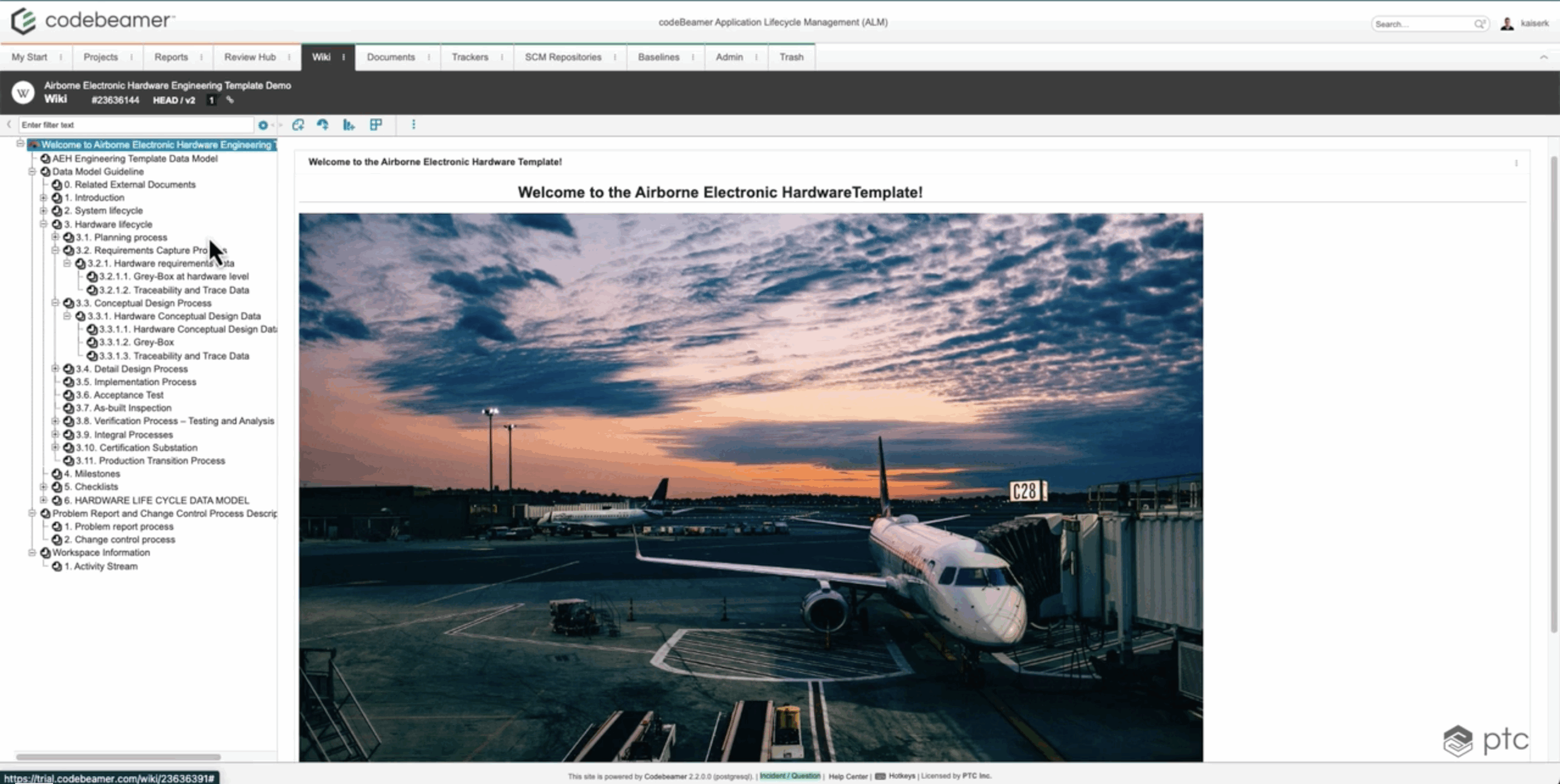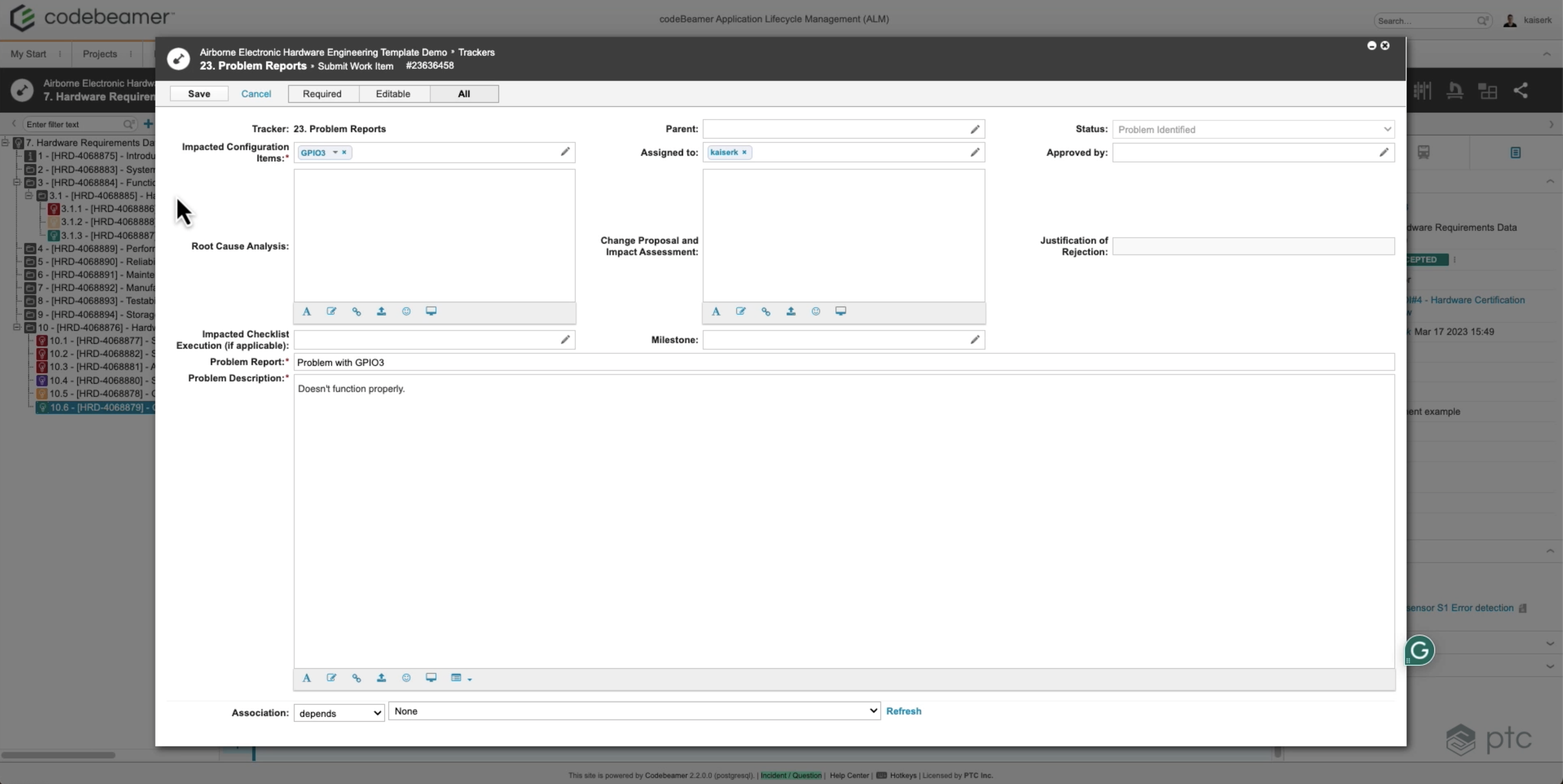In the aerospace industry, safety is non-negotiable. From passenger aircraft to defense systems, every airborne software component must meet rigorous standards. DO-178C serves as the benchmark for ensuring that aviation software is developed with the highest degree of safety and reliability. Compliance with this standard instills industry trust, but it also introduces complex challenges for engineering teams. This blog examines common difficulties in meeting DO-178C requirements and how ALM solutions, such as PTC’s Codebeamer, can streamline the process and enhance efficiency.

What Is DO-178C?
DO-178C is the primary standard used by certification authorities worldwide to determine the airworthiness of airborne software. Originating in the late 20th century to address the growing role of software in aircraft systems, it has evolved into an objective-based standard.
The standard defines Development Assurance Levels (DALs) from Level A (“Catastrophic” failure impact) to Level E (“No effect on safety”), with more stringent verification and documentation requirements at higher DALs. DO-178C also works in tandem with hardware-focused DO-254 for complete avionics compliance. By following DO-178C, organizations can:
- Enhance safety and reduce operational risk
- Improve development process efficiency
- Build credibility with regulators and customers
- Access global aerospace markets
Common Challenges in DO-178C Compliance
Despite its benefits, achieving DO-178C compliance can be daunting. This can be due to its complex documentation and traceability requirements. Teams must maintain end-to-end traceability from high-level requirements to implementation and testing, which can be difficult. This is especially true for teams utilizing legacy tools. Organizations relying on outdated tools or paper documentation may have slow review cycles that are more prone to human error. This can complicate change management. DO-178C also requires extensive testing, verification, and formal reviews. For higher DALs, verification activities can be resource-heavy. Organizations must also consider training. Transitioning from older standards or starting from scratch demands a deep understanding of supplementary documents and formal methods. Lastly, scaling compliance can be an issue. Large or multi-system projects amplify the difficulty of maintaining consistency, traceability, and version control across artifacts.
Codebeamer DO-178C Template
PTC’s Codebeamer offers a DO-178C Template, which is designed specifically to address these challenges. Built on a powerful ALM platform, it provides out-of-the-box processes, workflows, and artifacts aligned with DO-178C objectives. Key features include:
- Avionics Requirements Management: End-to-end bidirectional traceability from ARP4754A system-level requirements to DO-178C software requirements.
- Gapless Traceability: Visual traceability browsers and preconfigured matrices linking requirements, design elements, test cases, and change requests.
- Test Management: Built-in test execution tools to run verification cases, log defects, and manage change requests.
- Lifecycle Checklists: Preloaded acceptance and planning checklists to ensure all objectives are met before progression.
- Configuration Management: Automated baselining, version control, and audit trails for all work items.
- Out-of-the-Box Workflows: Status changes, automated actions, and guard conditions to enforce quality gates.
How the Template Minimizes Risk and Maximizes Efficiency
The DO-178C Template streamlines compliance efforts for organizations, allowing them to use it “out of the box” or adapt it to their specific processes. This helps teams avoid the costly, time-consuming task of building a compliance framework from scratch. It also reduces complexity through automation. It automates traceability, impact analysis, and configuration management to prevent gaps and reduce manual errors. Additionally, it accelerates audit readiness with preconfigured reports and dashboards that give instant visibility into compliance status, requirement coverage, and testing progress. These are all vital pieces of information for safety-critical audits.
Codebeamer’s DO-178C Template also improves collaboration by breaking down silos between hardware, software, and quality teams. Its centralized platform and version-controlled environment help with this. Furthermore, it handles multi-project complexity with features like e-signatures, suspected link tracking, and multi-version testing. This is great for teams that need to scale.
Achieving DO-178C Compliance for Aerospace Software Development
DO-178C compliance is essential for ensuring the safety, reliability, and market readiness of airborne software. Having the right approach can eliminate the complexity of aligning to the standard. By leveraging a purpose-built solution like Codebeamer’s DO-178C Template, aerospace organizations can minimize risk, improve efficiency, and streamline their certification process. In doing so, they not only meet requirements but strengthen their competitive position in a high-stakes industry. If you want to learn more about Codebeamer or how to achieve success in aerospace software development, contact SPK and Associates.










